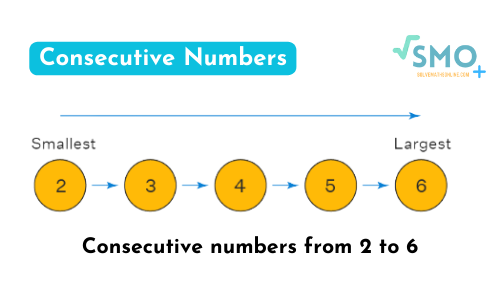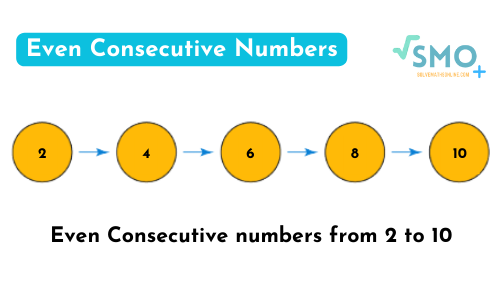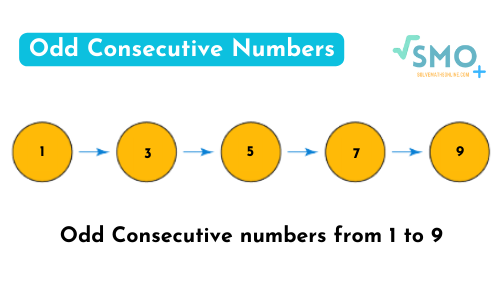Table of Contents
Overview
Consider an example from everyday life. When we go to see a movie with family or friends, we always try to get adjacent seats so that we can sit together. As a result, we prefer seats that are adjacent to one another!
Likewise,
Consecutive numbers are those that come after each other in a regular counting order or in ascending order from smallest to largest.
Example: 1, 2, 3, 4, 5, 6…

Formula
The formula for consecutive numbers (assuming that the numbers are separated by a difference of 1) is written as, n, n+1, n+2, n+3, n+4, and so on.
Consecutive Even Numbers
We know that even numbers are divisible by two and end in 0, 2, 4, 6, or 8. Consider the set of even numbers ranging from 2 to 12, and write them in ascending order. When written from smallest to largest, the numbers are 2, 4, 6, 8, 10, 12. The difference between any predecessor–successor pair is 2 as we can see. As a result, these numbers comprise the sequence of consecutive even numbers.
The formula to find the consecutive even number is 2n, where “n” can be any integer.
i.e. 2n, 2n+2, 2n+4, 2n+6,…

Consecutive Odd Numbers
We all know that odd numbers are those that are not divisible by two. We can see that when we arrange them in ascending order, the difference between them is always 2. The numbers 3, 5, 7, 9, and 11 are examples of consecutive odd numbers because the difference between any predecessor-successor pair is 2, as in 5 – 3 = 2 and 7 – 5 = 2.
If n is an odd number, then n+2, n+4, and n+6,… are consecutive odd integers.

How to Find the Consecutive Numbers When the Sum Is Given?
Assume that the sum of two consecutive numbers is 75.
As a result, we know that two consecutive numbers have the form n, n+1
Sum = 75
so, n + n + 1 = 75
2n + 1 = 75
2n = 74
n = 37
n + 1 = 38
As a result, the consecutive numbers that add up to 75 are 37 and 38.
How to Find the Consecutive Numbers When the Product Is Given?
Assume that the product of two consecutive numbers is 30.
We’ll find the two perfect squares that contain the product. Remember that perfect squares should correspond to consecutive numbers.
We are aware of this 5 x 5 = 25 and 6 x 6 = 36.
As a result, the consecutive numbers with a product of 30 are 5 and 6.
Trick To Find Sum Of Ten Consecutive Numbers
FAQ
Q.1. What is 12 the sum of three consecutive numbers?
Ans. Let us take three numbers to be,
n, (n+1), (n+2)
Then the sum of these numbers is
n + (n + 1) + (n + 2) = 12
3n + 3 = 12
3n = 9
n = 3
therefore, the three numbers are 3, 4, and 5.
Q.2. The sum of three consecutive odd numbers is 63. Find the numbers?
Ans. Let the three consecutive odd numbers be (2x+1), (2x+3), and (2x+5).
Given, The sum of three consecutive odd numbers is 63.
So, (2x+1) + (2x+3) + (2x+5) = 63
6x + 9 = 63
6x = 54
x=9
So, three consecutive odd numbers are
(2×9+1), (2×9+3), and (2×9+5)
i.e., 19, 21, and 23.
Other Maths Concepts
To understand other maths concepts, please check our other articles:
- Rational and Irrational Numbers
- What are Natural Numbers
- Integers Definition With Easy Examples | What Are Integers
- Whole Numbers | Definition, Examples, Full Explanation
- Imaginary Numbers Definition With Easy Examples
- Real Numbers Definition | Real Numbers Examples
- Simple Explanation of Composite Numbers
- What is Prime Factorization | Prime Factorization 2 Easy Methods
